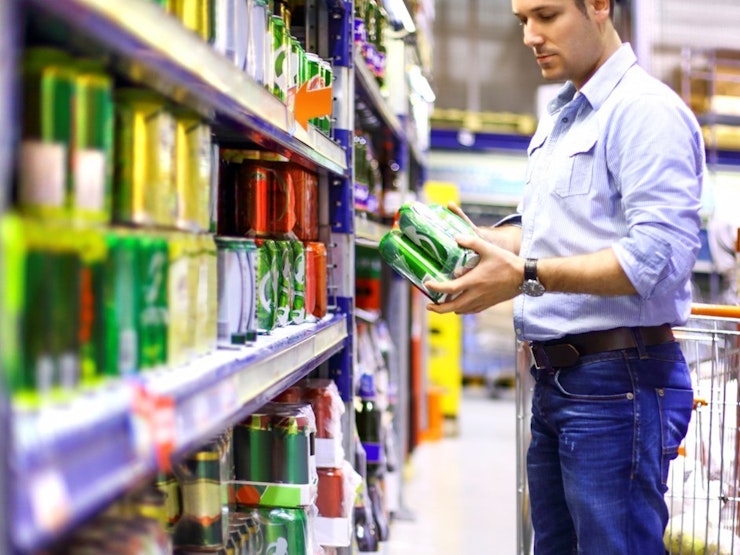Note: This report was funded and/or written by our predecessor organisation, the Alcohol Education Research Council (AERC).
12 March 2008
Researchers:
Alcohol Concern
Introduction
In order to gauge to what extent children are being exposed to alcohol advertising, Alcohol Concern decided to investigate the scheduling of alcohol adverts, and in particular to see the extent to which they appear on television before and after the 9pm watershed. We wished to see whether any TV alcohol adverts are placed within programmes aimed at children. We were also keen to investigate whether the current rules on the scheduling of adverts are adequate.
An investigation was carried out of two separate weeks of broadcasting, analysing when alcohol adverts appeared and within which TV programmes. A small sample of individual programmes were then analysed for demographic breakdowns to elicit the percentage of children viewing at the time. Results indicate that the majority of alcohol adverts actually appear before 9pm.
Background and Current Research
Clearly, if alcohol advertising occurs before the 9pm watershed there is a stronger possibility that children may be watching. Placing alcohol adverts within television scheduling when young people are viewing could be one factor for the increase in volume of alcohol consumed by children who drink. The World Health Organisation’s European Charter on Alcohol states that:
“All children and adolescents have the right to grow up in an environment protected from the negative consequences of alcohol consumption and, to the extent possible, from the promotion of alcoholic beverages.”.1
A Brussels study commissioned recently found that exposure to alcohol adverts encourages “youth drinking and increased drinking”. The study exhorted the industry to “cease the production and marketing of products that are attractive to or target children and adolescents”.2
The question at hand is not whether drinks companies deliberately target under-age drinkers in order to grow their customer base. Rather, it is whether as a result of frequent exposure to advertising on mainstream media, adolescents are more likely to begin consuming alcohol.
Several studies have shown that young people are increasingly adept at interpreting the cultural messages contained in alcohol advertisements. Researches undertaken at the University of Strathclyde of attitudes to alcohol advertising among 10-17 year olds indicate that:3
- 88% of 10-13 year olds and 96% of 14-17 year olds were aware of alcohol advertising and 76% of these (across the whole age range) could identify three or more advertisements when the brand name was masked.
A recent report by Saffer and Dave found that alcohol advertising (the majority of which focuses on beer and spirits rather than wine) had a positive effect on the decisions young people make on whether to drink and how much they consume.4
A long-term national study in the U.S. published in January 2006 concluded that for each additional dollar per capita spent on alcohol advertising in a local market, young people drank 3% more.5
The Academy of Medical Sciences report Calling Time,6 demonstrates a clear link between spending on alcohol advertising and children’s drinking, as can be seen from Figure 1 below.
Figure 1

Figure 2 also shows a strong possibility of a link between the binge drinking levels of 11-15 year old with the annual spend on alcohol advertising for spirits and ‘alcopops’ (RTDs).7
Figure 2

Mean alcohol consumption (in units) of secondary school 11-15 yr olds who had drank in the last week and advertising expenditure on spirits (including RTD)
Interestingly both genders’ binge drinking dips in 2000-01, following a drop in advertising expenditure in 1998-2000; and also around 2003, which is when Ofcom changed their advertising rules to the current stricter ones (see below).
Research on young people’s alcohol consumption rates carried out last year showed a marginal decrease in the numbers of young people who had consumed alcohol in the past week.8 However children who do consume alcohol are now drinking more units than previously and 11-13 year olds particularly show a startling rise, with 11-13 year old boys drinking 43% more units in 2006 than they did in 2000 and 11-13 year old girls drinking 82% more units in 2006 than they did in 2000.9
Broadcasting and the Regulatory Framework
The Advertising Standards Authority scheduling and the Committee of Advertising Practice (Broadcasting) rules dictate no alcohol adverts should be shown during programmes aimed at children. However, while programmes aimed at young (pre-school) children may be simple to classify, it is increasingly difficult to determine which programmes are aimed at children in their mid-teens. There is also an inconsistency in that while the ASA defines children as those under the age of fifteen, the rules applying to alcohol refer more broadly to audiences under the age of 18.
Alcohol Concern Research
Alcohol Concern carried out unique research into alcohol adverts in two separate weeks (11th – 17th December 2006 and 19th – 25th March 2007) to ascertain how many alcohol adverts featured before the 9pm watershed, which TV programmes these were placed during and the age breakdown of a small sample of programmes potentially aimed at or attractive to children.
Figure 3 shows the distribution of alcohol adverts before and after the 9pm watershed in a 7-day period in December 2006. It is to be expected that there are more adverts in the run up to Christmas but our study showed the majority of alcohol adverts were shown before the 9pm watershed. Twice as many supermarket alcohol adverts shown before the watershed than after.

Number of alcohol adverts during the 7 day period in December 2006
Figure 4 below shows the number of alcohol adverts on television in the selected two weeks by an hourly time code. This clearly illustrates a large peak after 9pm but a larger number of adverts prior to the watershed, especially in the December time-frame. There is also a rising number of alcohol adverts shown from 3pm to 5pm. This coincides with the time when most children return from school.

Analysis of Alcohol Advertising with a Significant Share of Children’s Audience
Alcohol Concern analysed the audience demographic breakdown for three individual airings within programming that may appeal to children. Programmes investigated included those that in Alcohol Concern’s understanding:
- May appeal to children
- May appeal to a young audience where children may be viewing
- Popular soaps prior to the watershed where family viewing, including children may occur
Table 1 – Analysis of Alcohol Advertising with a potentially significant share of Children’s Audience
| Advertiser | Alcohol Product | Channel | Time / Date | Programme |
| William Morrison’s (supermarket) | Special Offers – 2 Packs Of Grolsch For £16 | Channel Five | 6.13pm11th December 2006 | Home and Away |
| Lidl (supermarket) | Fine Wines & Low Prices 3 | ITV | 7.46pm15th December 2006 | Coronation Street |
| William Morrison’s (supermarket) | Special Offers – 2 Packs Of Grolsch For £16 | ITV | 1.53pm17th December 2006 | The X Factor – The Final |
Source: Mediametrie/Xtreme Information 2007
The demographic breakdown for the audience share of 14-19 year olds for each programme is as follows:
Table 2 – Demographic Breakdown of Share of Audience
| Programme | Percentage of 4-19 year olds viewing (share of audience) | Total Number of 4-19 year olds viewing |
| The X Factor | 18.18% | 6,000 |
| Home and Away | 12.67% | 237,300 |
| Coronation Street | 11% | 1,126,000 |
Source: Eurodata TV. / BARB / TNS UK
The viewing figures of 4-19 year olds watching the Coronation Street episode highlighted in Table 2 are of particular concern, with over 1 million children watching at that time. This demonstrates that even when the 4-19 year old share of the audience is as low as 11%, significant number are exposed to alcohol adverts.
As a parent, it is reasonable to expect that your children will be protected from the undue influence of alcohol advertising, especially when watching what parents would expect to be “juvenile” or family programming. The BCAP rules however, mean that there will be occasions as identified in this research where parents’ assumptions will not necessarily be reflected in schedulers’ decisions.
Conclusion and recommendations
In terms of the research carried out by Alcohol Concern, the findings presented in this paper can be summarized as follows:
- The majority of TV alcohol advertising is scheduled prior to 9pm
- There is a particular spike in alcohol adverts shown between 3pm and 5pm
- A number of programmes where a significant share of the audience included children contained alcohol adverts, including Home and Away and The X-Factor
In spite of Ofcom, BCAP and ASA guidance and regulations, it appears that the large majority of TV alcohol adverts appear before 9pm, when it is more likely that children will be watching. In particular, there is a spike between 3pm and 5pm when children’s programming is often scheduled and when most children are returning home from school.
Supermarket advertising appears to particularly aim to reach audiences prior to 9pm, with double the amount of supermarket alcohol adverts appearing before 9pm. However during the 3pm-5pm slot, branded adverts spike at around 250 adverts shown, with the number of beer and spirit adverts particularly rising in this period.
Similarly, The X Factor and Home and Away are clearly programmes viewed by children and likely to appeal to a young audience. Current rules mean that hundreds of thousands of children are regularly being exposed to alcohol advertising in this country.
The Advertising Standards Authority is responsible for dealing with public complaints about advertising but the system used for assessing whether a programme is suitable for alcohol advertising is complex and not well publicised, and this therefore makes it difficult for the public to complain.
- In light of the findings presented, Alcohol Concern recommends that there should be no alcohol advertising (either branded or supermarket) from 6am through to 9pm regardless of the predicted age of audience of a programme.
- In programmes which run after the watershed but are still likely to appeal to some children, e.g. sporting events, alcohol adverts should not appear where more than 10% (I in 10) of the audience are/are likely to be children.
- The regulations covering alcohol adverts should state clearly who is responsible for monitoring scheduling and what sanctions exist when these are contravened. This information should be publicly promoted.
Footnotes
1 http://www.euro.who.int/document/E57528.pdf
2 Sunday Times July 2, 2006 “Alcohol firms face advertising curb in binge-drinking crackdown” http://www.timesonline.co.uk/article/0,,2087-2252651,00.html
3 Aitken, P.P et al (1988) Television advertisements for alcoholic drinks do reinforce under-age drinking, British Journal of Addiction, Vol 83, no. 12, pp. 1399-1419
4 Alcohol Advertising and Alcohol Consumption by Adolescents (NBER Working Paper No. 9482: 2004).
5 L.B. Snyder, F.F. Milici, M. Slater, H. Sun, and Y. Strizhakova, “Effects of Alcohol Advertising Exposure on Drinking Among Youth,” Archives of Paediatrics and Adolescent Medicine 160 (2006): 18-24.
6 “Calling Time”, Academy of Medical Sciences, 2004
7 Table 3.2 Drug Use, Smoking and Drinking among Young People in England in 2005: Headline Figures, The Information Centre and Drink Pocket Book 2005, ACNielsen
8 Information Centre, Smoking, drinking and drug use among young people in England in 2006: headline figures
9 Glass Half Empty, Alcohol Concern, 2007

